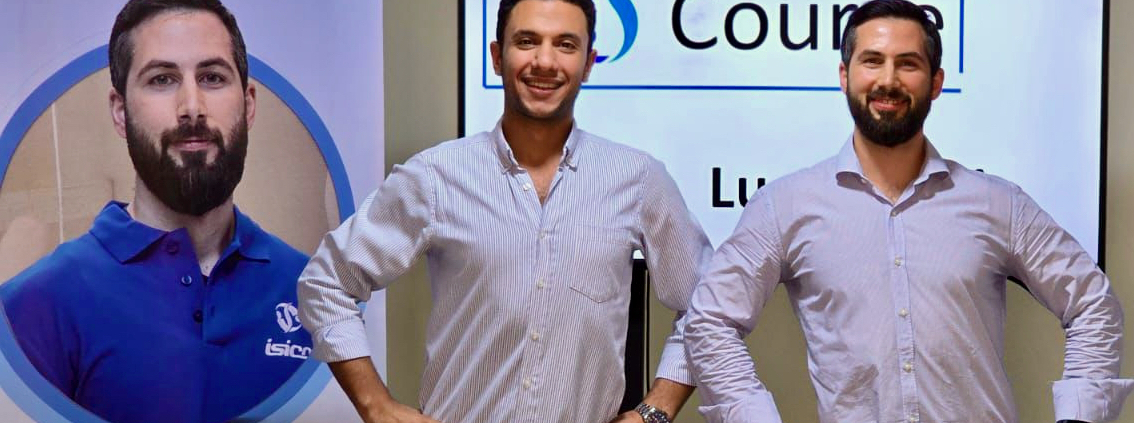Luca Selmi comments on SEAS course in Egypt
A few weeks ago, our physiotherapist Luca Selmi held a SEAS course in Cairo, Egypt. We took the opportunity to ask him about his experience, as it was the first time he had conducted an international course on his own.
We also remember that the local organiser, Essam Rashad, physiotherapist and owner of the “Scoliofix” centre in Cairo (pictured with Selmi), was one of the first partners of ISICO Alliance.
● Was it the first time you held a SEAS course?
No, I started working as a SEAS trainer in both national and international contexts about 2 years ago, initially alongside our Head of Physiotherapy, Michele Romano, and later independently. However, this was my first course as the sole instructor at the international level.
● And in Cairo, was it your first time?
Yes, I had never been to Egypt, although in some way, I didn’t feel it was so far away since I have a close friend with Egyptian roots.
● How did it go?
Very well, I’d say even better than expected. I was confident about doing a good job, but in these situations, teaching success is closely tied to participant feedback. Fortunately, the feedback was very positive. Additionally, on the day of departure, I was lucky enough to spend a few hours as a tourist, and the grandeur of the Pyramids left me speechless!
● How many participants?
There were 21, all physiotherapists.
● What were they most interested in?
The academic path to a physiotherapy degree differs in Egypt compared to Italy. It lasts six years, and a medical prescription does not bind the physiotherapist. They can work independently, prescribe X-rays, and, in the case of patients with scoliosis, even braces. I sensed great interest in the comprehensive management of patients, with obviously more focus on the physiotherapy approach, as it was their first exposure to SEAS. Only a few had experience with scoliosis patients, but they used other treatment methods. So, it was an excellent opportunity for exchange and mutual learning.
● What kind of questions did they ask?
I’d say I’ve never received so many questions in the courses I’ve held before. Since it was a very practical course, I sensed a strong desire for “one-on-one” interaction on how to teach corrective movements. They even practiced directly with their hands on my torso, as if I were the patient, so I could give them feedback.
● What would you focus on in future courses?
From what I’ve seen, there’s a lot of interest in high-quality information and training. I was told that the first option for patients in the region is “wait and see,” possibly leading to surgery. Conservative treatment has not yet offered a sufficient alternative, from the medical personnel’s perspective.
In the coming years, having a growing number of therapists trained and updated based on the latest scientific evidence, and therefore able to offer patients an alternative to just hoping things don’t get much worse, while also being a valuable team ally for doctors, will be a great achievement.
● What are your next appointments?
My next course will be in Italy in early November, and I will return to Cairo in early April 2025.


Leave a Reply
Want to join the discussion?Feel free to contribute!